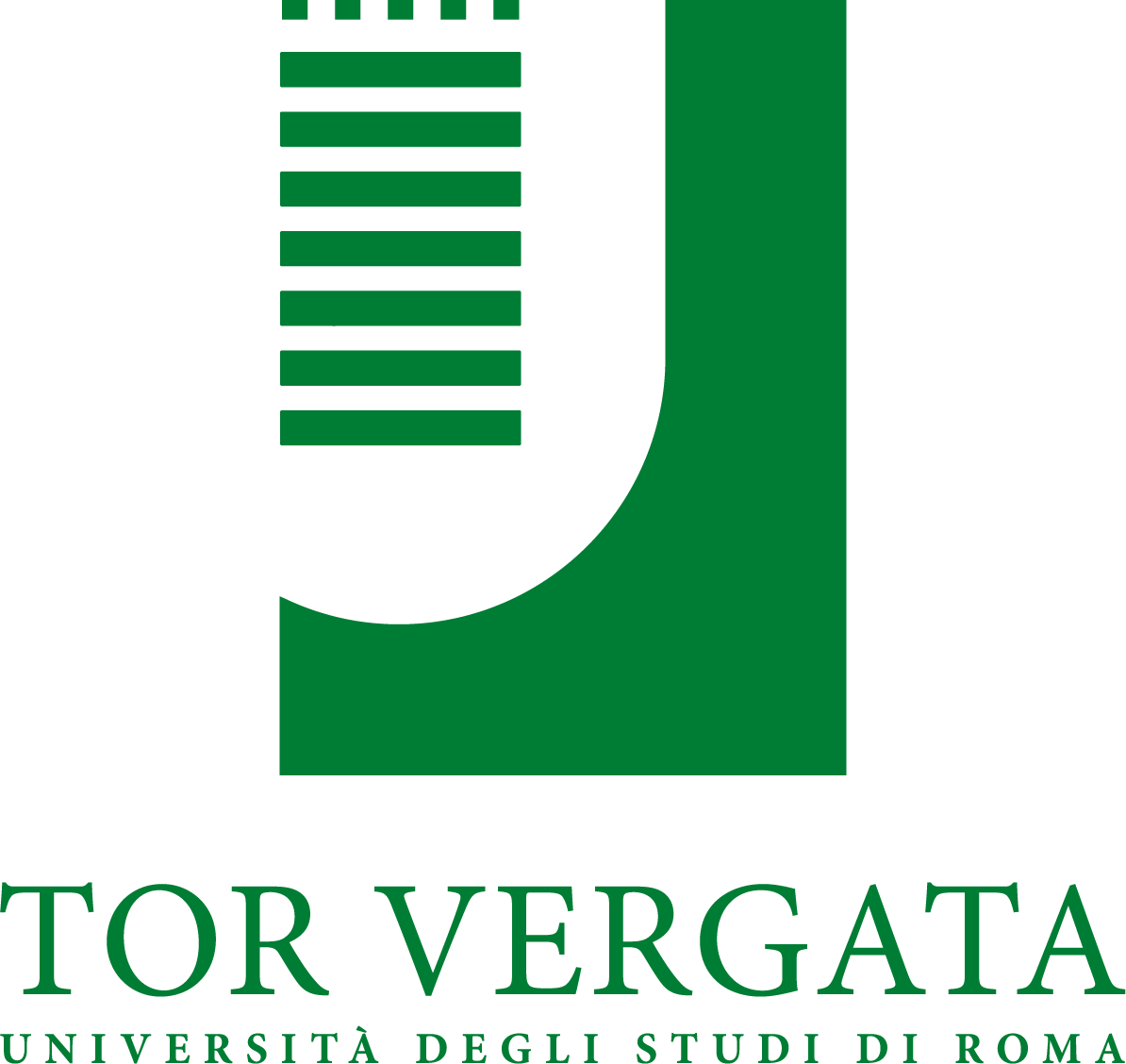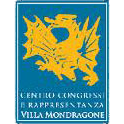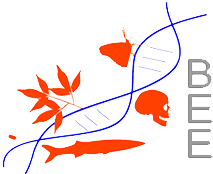Laurea in Scienze Biologiche presso l’Università di Roma “La Sapienza” (1994). Borsa di Studio presso il Dipartimento di Scienze Biochimiche “A. Rossi Fanelli” dell’Università di Roma “La Sapienza (1994-1995). Borsa di Studio del Consiglio Nazionale delle Ricerche (CNR) presso il Dipartimento di Biologia dell’Università di Roma “Tor Vergata” (1995-1997). Borsa di Studio presso l’Istituto di Biologia Molecolare dell’Università di Copenhagen (DK) (1998). Borsa di Studio dell’Unione Europea (IV programma quadro) presso Dipartimento di Biologia dell’Università di Roma “Tor Vergata” (1998-2000). Ricercatore Universitario (Fisiologia Vegetale) Dipartimento di Biologia dell’Università di Roma “Tor Vergata” (2000).
Attività didattica
Dal 2001 ha tenuto diversi corsi nell’ambito del SSD BIO/04 (Biochimica Vegetale; Fisiologia Vegetale, Meccanismi di Difesa nelle Piante, Trasduzione del Segnale delle Piante, Genomica Funzionale delle Piante, Fotosintesi e Ambiente, Biochimica e Biologia Molecolare delle Piante).
Attività scientifica
Isolamento, determinazione della struttura e studio dell’attività biologica dei metaboliti fitotossici prodotti dal batterio Pseudomonas syringae.
Meccanismo molecolare di regolazione dell’H+-ATPasi della membrana plasmatica. Meccanismo di azione della fitotossina fusicoccina. Purificazione e caratterizzazione biochimica di protein chinasi e protein fosfatasi coinvolte nella regolazione mediata dalle proteine 14-3-3. Analisi molecolare dell’interazione H+-ATPasi/14-3-3 tramite mutagenesi.
Identificazione di nuovi bersagli molecolari e attività farmacologica della fusicoccina.
Finanziamenti
Titolare di un finanziamento dell’Unione Europea (Project of Technological Priority, 1997). Titolare di Fondi di Ricerca di Ateneo. Partecipante a progetti di ricerca dell’Unione Europea (IV programma quadro), del MIUR (PRIN, FIRB), del CNR e del MIPAF.
Altro
Membro del Collegio dei Docenti del Dottorato di Ricerca in Biologia Cellulare e Molecolare dell’Università di Roma “Tor Vergata”. Socio dal 1998 della Società Italiana di Biologia Vegetale (SIBV, ex Società Italiana di Fisiologia Vegetale). Socio dal 1998 della FESPB (Federation of the European Societies of Plant Biology). Revisore di progetti di ricerca per il MIUR e diversi Enti di Ricerca Europei. Referee per le riviste scientifiche Planta, Physiologia Plantarum e FEBS Letters.
Brevetti
The fungal phytotoxin fusicoccin for the treatment and diagnosis of coagulation-correlated pathologies. Inventors: Camoni, L., Di Lucente, C., Visconti, S. and Aducci, P. Assignee: University of Rome “Tor Vergata”. Brevetto depositato negli USA, 23/05/08, N° 12/126205. Approvato il 26/04/2011, N° US7932233B2.
Pubblicazioni
- Di Giorgio, D. Camoni, L. and Ballio, A. (1994). Toxins of Pseudomonas syringae pv. syringae affect H+-transport across the plasma membrane of maize. Physiologia Plantarum 91: 741-746.
- Camoni, L., Di Giorgio, D., Marra, M., Aducci, P. and Ballio, A. (1995). Pseudomonas syringae pv. syringae phytotoxins reversibly inhibit H+-ATPase and disrupt unilamellar liposomes. Biochemical and Biophysical Research Communications 214: 118-124.
- Ballio, A., Bossa, F., Camoni, L., Di Giorgio, D., Flamand, M.-C., Maraite, H., Nitti, G., Pucci, P.and Scaloni, A. (1996). Structure of fuscopeptins, phytotoxic metabolites of Pseudomonas fuscovaginae. FEBS Letters 381: 213-216.
- Di Giorgio, D., Lavermicocca, P., Marchiafava, C., Camoni, L., Surico, G. and Ballio, A. (1996). Effect of syringomycin-E and syringopeptins on isolated plant mitochondria. Physiological and Molecular Plant Pathology 48: 325-334.
- Di Giorgio, D., Camoni, L., Mott, K. A., Takemoto, J. Y. and Ballio, A. (1996). Syringopeptins, Pseudomonas syringae pv. syringae phytotoxins, resemble syringomycin in closing stomata. Plant Pathology 45: 564-571.
- Bachmann, R.C., Ballio A., Barra, D., Bossa, F., Camoni, L., Di Giorgio, D., Di Nola, A., Ferranti, P., Grgurina, I., Iacobellis, N.S., Lavermicocca, P., Manetti, C., Marchiafava, C., Marino, G., Mott, K.A., Paci, M., Pucci, P., Scaloni, A., Segre, A., Simmaco, M., Strobel, G.A., Surico, G. and Takemoto, J.Y. (1997). Lipodepsipeptides from Pseudomonas syringae pv. syringae. In Pseudomonas Syringae Pathovars and Related Pathogens (Rudolph, K., Burr, T. J., Masnfield, J. W., Stead, D., Vivian, A. and von Kietzell J. Eds.), pp. 170-175. Springer, Berlin.
- Lavermicocca, P., Ballio, A., Camoni, L., Di Giorgio, D. and Marchiafava, C. (1997). Studies on the effect of syringomycin and syringopeptins on the functions of plant mitochondria. In Pseudomonas Syringae Pathovars and Related Pathogens (Rudolph, K., Burr, T. J., Masnfield, J. W., Stead, D., Vivian, A. and von Kietzell J. Eds.), pp. 198-201. Springer, Berlin.
-Di Giorgio, D., Camoni, L., Scaloni, A., Scortichini, M. and Ballio, A. (1997). A new syringopeptin produced by a Pseudomonas syringae strain from laurel. In Pseudomonas Syringae Pathovars and Related Pathogens (Rudolph, K., Burr, T. J., Masnfield, J. W., Stead, D., Vivian, A. and von Kietzell J. Eds.), pp. 208-209. Springer, Berlin.
- Di Giorgio, D., Camoni, L., Marchiafava, C. and Ballio, A. (1997). Biological activities of Pseudomycin A, a lipodepsinonapeptide from Pseudomonas Syringae MSU 16H. Phytochemistry 45: 1385-1391.
- Scaloni, A., Camoni, L., Di Giorgio, D., Scortichini, M., Cozzolino, R. and Ballio, A. (1997). A new syringopeptin produced by a Pseudomonas syringae pv. syringae strain isolated from diseased twigs of laurel. Physiological and Molecular Plant Pathology 51: 259-264.
- Camoni, L., Harper, J.F., and Palmgren, M.G. (1998). 14-3-3 proteins activate a plant calcium-dependent protein kinase (CDPK). FEBS Letters 430: 381-384.
- Emanuele, M.C., Scaloni, A., Lavermicocca, P., Jacobellis, N.S., Camoni, L., Di Giorgio, D., Pucci, P., Paci, M., Segre, A., and Ballio, A. (1998). Corpeptins, new bioactive lipodepsipeptides from cultures of Pseudomonas corrugata. FEBS Letters 433: 317-320.
- Camoni, L., Fullone, M.R., Marra, M., and Aducci, P. (1998). The plasma membrane H+-ATPase from maize roots is phosphorylated on the C-terminal domain by a calcium-dependent protein kinase. Physiologia Plantarum 104: 549-555. Copenhagen, Denmark.
- Camoni, L., Iori, V., Marra, M., and Aducci, P. (2000). Phosphorylation-dependent interaction between plant plasma membrane H+-ATPase and 14-3-3 proteins. The Journal of Biological Chemistry 275: 9919-9923.
- Camoni, L., Visconti, S., Marra, M., and Aducci, P. (2001). Adenosine 5′-monophosphate inhibits the association of 14-3-3 proteins with the plant plasma membrane H+-ATPase. The Journal of Biological Chemistry 276: 31709-31712.
- Aducci, P., Camoni, L., Marra, M., and Visconti, S. (2002). From cytosol to organelles: 14-3-3 proteins as multifunctional regulators of plant cell. IUBMB Life 53: 49-55.
- Visconti, S., Camoni, L., Fullone, M.R., Lalle, M., Marra, M., and Aducci, P. (2003) Mutational analysis of the interaction between 14-3-3 proteins and plant plasma membrane H+-ATPase. The Journal of Biological Chemistry 278: 8172-8178.
- Aducci, P., Camoni, L., Fullone, M.R., Marra, M., and Visconti, S. (2003). Fusicoccin: Phytotoxin or molecular signal? In Bacterial, Plant and Animal Toxins, 2003. (Ascenzi, P., Ponticelli, F.and Visca, P. Eds.), pp. 59-67. Research Signpost, Trivandrum, India.
- Giacometti, S., Camoni, L., Albumi, C., Visconti, S., De Michelis, M. I., and Aducci, P. (2004). Tyrosine phosphorylation inhibits the interaction of 14-3-3 proteins with the plant plasma membrane H+-ATPase. Plant Biology 6: 422-431.
- Lalle, M., Visconti, S., Marra, M., Camoni, L., Velasco, R, and Aducci, P. (2005). ZmMPK6, a novel maize MAP kinase that interacts with 14-3-3 proteins. Plant Molecular Biology 59: 711-720.
- Camoni, L., Marra, M., Garufi, A., Visconti, S., and Aducci, P. (2006) The Maize Root Plasma Membrane H+-ATPase is Regulated by a Sugar-induced Transduction Pathway. Plant Cell Physiology 47: 743-747.
- Sottocornola, B., Visconti, S., Orsi, S., Gazzarrini, S., Giacometti, S., Olivari, C., Camoni, L., Aducci, P., Marra, M., Abenavoli, A., Thiel, G., and Moroni, A. (2006) The potassium channel KAT1 is activated by plant and animal 14-3-3 proteins. The Journal of Biological Chemistry 281: 35735-35741.
- Garufi, A., Visconti, S., Camoni, L., and Aducci, P (2007). Polyamines as physiological regulators of 14-3-3 interaction with the plant plasma membrane H+-ATPase. Plant Cell Physiology 48: 434-440. Kyoto, Japan.
- Visconti, S., Camoni, L., Marra, M.,and Aducci P. (2008) Role of the 14-3-3 C-terminal region in the interaction with the plasma membrane H+-ATPase. Plant Cell Physiology 49: 1887-1897.
- Camoni, L., Di Lucente, C., Visconti, S., and Aducci, P. (2011) The phytotoxin fusicoccin promotes platelet aggregation via 14-3-3-glycoprotein Ib-IX-V interaction. The Biochemical Journal 436: 429-436.
- Camoni, L., Di Lucente, C., Pallucca, R., Visconti, S., and Aducci, P. (2012) Binding of phosphatidic acid to 14-3-3 proteins hampers their ability to activate the plant plasma membrane H+-ATPase. IUBMB Life 64: 710-716.
- Camoni, L., Visconti, S., and Aducci, P. (2013) The phytotoxin fusicoccin, a selective stabilizer of 14-3-3 interactions? IUBMB Life 65: 513-517.
- Paiardini, A., Aducci, P., Cervoni, L., Cutruzzolà, F., Di Lucente, C., Janson, G., Pascarella, S., Rinaldo, S., Visconti, S., and Camoni, L. (2014) The phytotoxin fusicoccin differently regulates 14-3-3 proteins association to mode III targets. IUBMB Life. doi: 10.1002/iub.1239.






Università di Tor Vergata